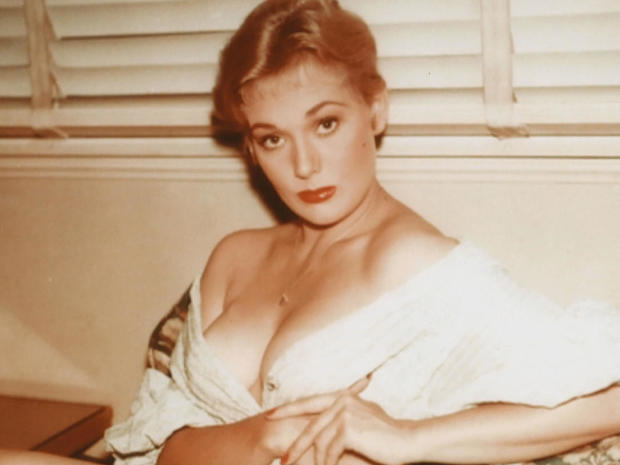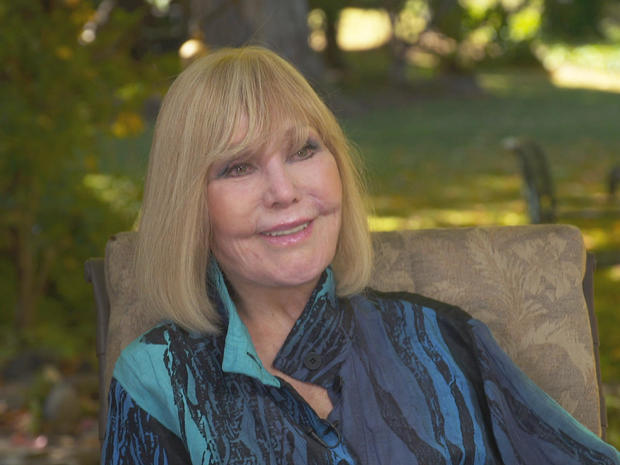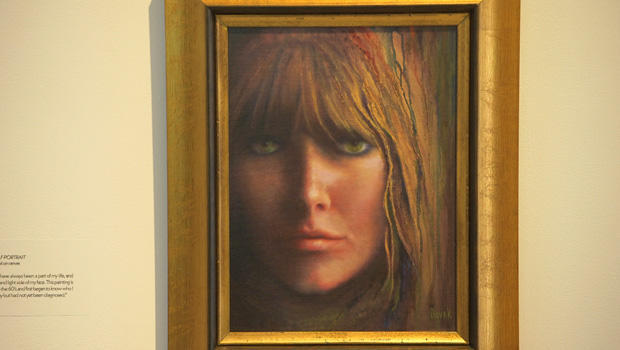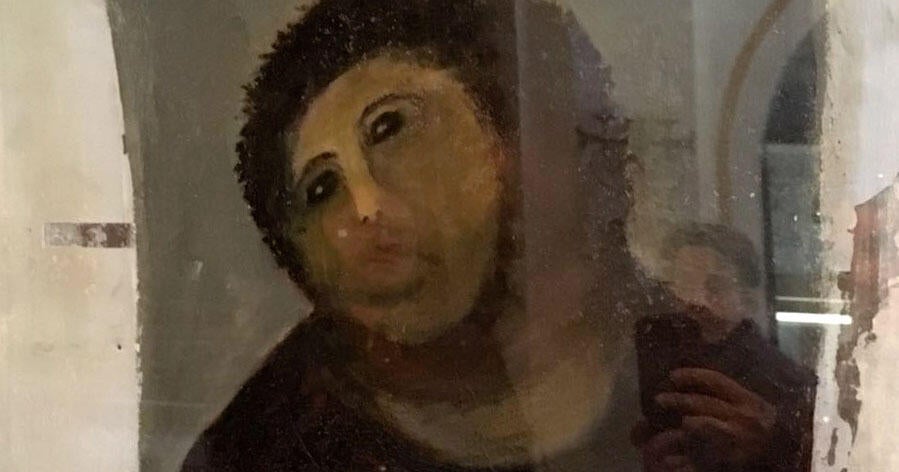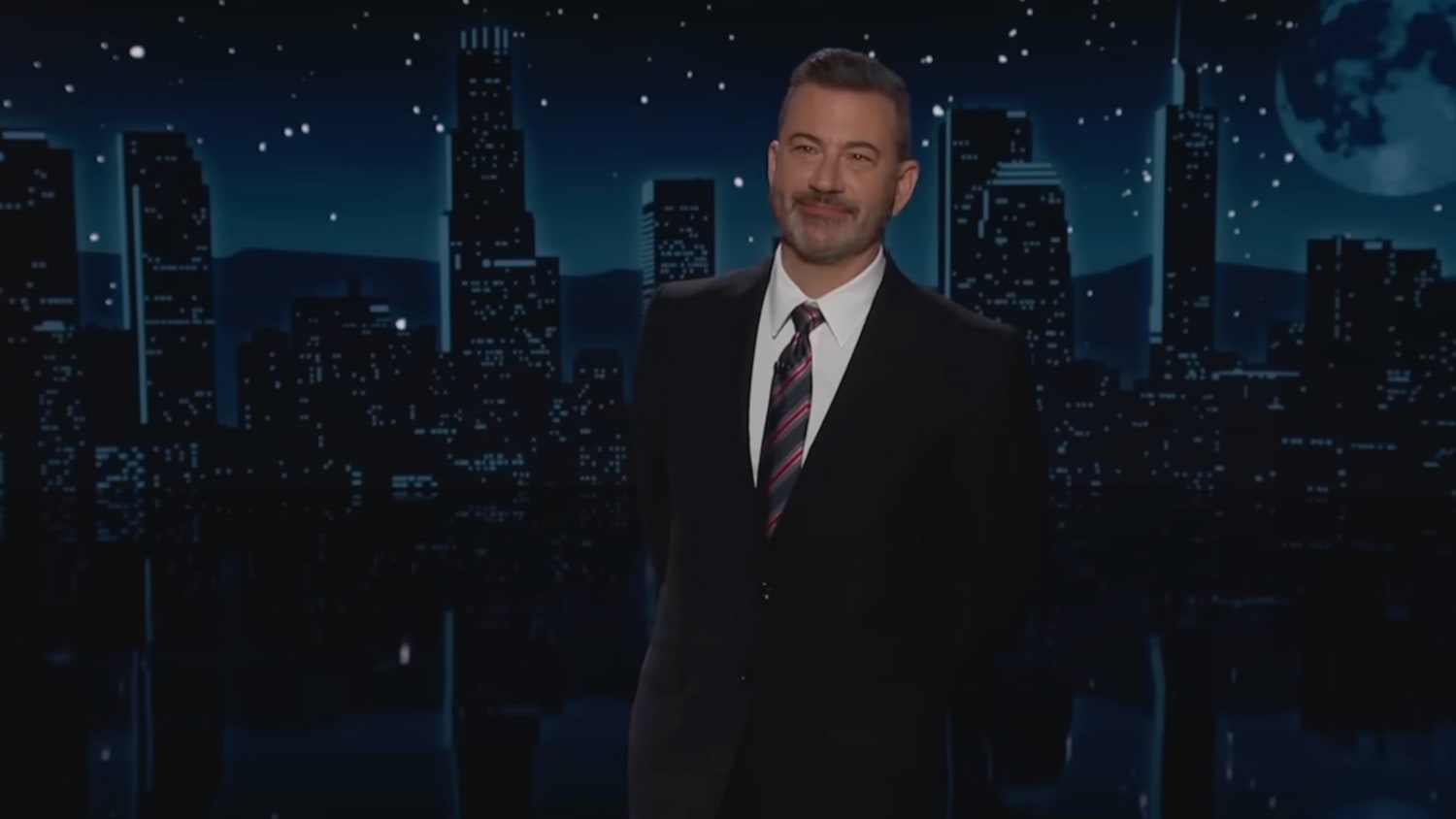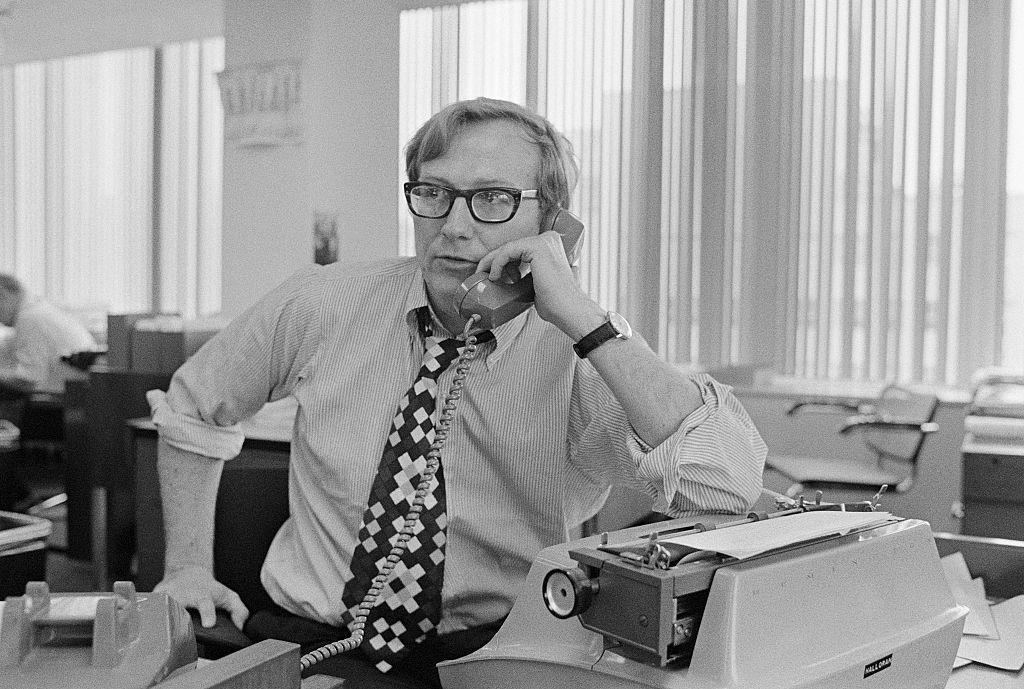The art of Kim Novak
On exhibit at a recent art show in Youngstown, Ohio: an interpretation of Alfred Hitchcock's 1958 film "Vertigo," which starred Jimmy Stewart and Kim Novak. The artist? None other than Kim Novak.
In the 1950s and early '60s Novak was one of the biggest stars in Hollywood. She's most famous for "Vertigo," about the obsession of a retired police detective with a mysterious blonde named Madeleine, and his attempts to remake a brunette named Judy into Madeleine.
Judy: "If I let you change me, will that do it? If I do what you tell me, will you love me?"
Scottie: "Yes. Yes."
Both women were played by Novak.
Correspondent Mo Rocca asked, "Was it a challenging role, or I should say roles, for you?"
"Well, you know, the wonderful thing about Alfred Hitchcock is, in one way, he is obsessed with changing you in the physical sense of the character has to be exactly the way," Novak said. "But he allows you total freedom in the way you play the part."
But freedom doesn't exactly describe the studio system that controlled Hollywood in the 1950s. When Harry Cohn, the head Columbia Pictures, put a then-21-year-old Marilyn Pauline Novak under contract, he intended to make her over, starting with her name. "He wanted me to be Kit Marlowe," Novak said. "You see, they made up their mind behind my back – 'We all decided your name is going to be Kit Marlowe.' I said, 'I'm not going to be Kit Marlow, how can I be Kit Marlow? I understand I won't be Marilyn, but I will not be Kit Marlow.'"
Novak's upbringing in Chicago seemed to have prepared her well for standing up to the man Time magazine once called a "Hollywood despot." "Harry Cohn was frightening; my father was frightening. They had that in common," Novak said."
Her father was a railroad worker, and strict with his youngest daughter. Her conflicted feelings toward Cohn and her father remain raw. "I loved my father, I adored my father," she said. "But he terrified me. My father, he was a fine man in his way."
"But he was tough?"
"He was a tough man. I loved him. And I hated him. But I loved him more than I hated him."
When it came to dealing with Cohn, the newly-named Kim Novak had a novel approach: "I brought him chocolate fudge at Christmas," she said. "And I remember him actually tear up."
"But did you have affection for him?"
"No, not really. Although in a way I did, because he made good movies, you know? He always picked out good movies for me, and I appreciated that."
Good movies like 1955's "Picnic," where the 22-year-old starred opposite William Holden.
If this dance scene crackles with electricity, Novak says that's because a tornado was approaching the Kansas town where they were shooting.
"I think the electricity in the air had so much to do with all that we were feeling," she said. "And we were both charged with all that energy that was out there."
The life of an actor wasn't something that Novak expected. She thought she might become a poet or a painter, but modeling work brought her out west.
"When you got to Los Angeles, were you thinking, 'I'm gonna take this town'?" asked Rocca.
"Oh, God. No. I was so shy," she said.
Soon, Novak was working with some Hollywood heavyweights, both in front of the camera and behind, including Hitchcock, who knew exactly how he wanted his leading lady to look.
Rocca asked, "Tell me about the wardrobe for 'Vertigo.' What happened?"
"I went to Edith Head, and I said, 'That suit's gonna drive me crazy. And I have to wear black shoes, I hate black shoes.' And she says, 'Well, I think, my dear, you better talk to Alfred Hitchcock about that.'"
The gray suit Novak wore as Madeleine was form fitting. "He says, 'Yes, my dear, that's exactly what I want you to wear.'"
"He wanted you to be uncomfortable in that? asked Rocca.
"Exactly," said Novak. "That's when I realized, I have to have that discomfort. I need to feel uncomfortable in it, and that's the way my character should feel."
"Did you like Hitchcock?" asked Rocca.
"I adored him," she replied.
But Novak didn't always adore Hollywood. When Harry Cohn died suddenly in 1958, she found herself professionally out at sea, offered mostly beach movie scripts. In 1966, she left Hollywood.
"You know, I wasn't gonna wait around. And I thought, 'You know, what I'd like to do if I have my choice, I wanna go to Big Sur and go back to painting.' For better or worse, I left Hollywood. I let in very few people in my life, and I got involved with animals in my life."
And not just cats and dogs. "I had to learn who I was again through animals, because animals know who you really are," she said.
"The animals don't care about box office," Rocca said.
"Exactly, or money, or anything else."
With all the animals in her life, it's perhaps no surprise she married a veterinarian, Robert Malloy. They live in rural Oregon.
Novak's life these past few decades has been quiet, even idyllic ... mostly.
In 2014, when Novak made a rare public appearance at the Oscars, social media lit up with vicious comments about her appearance, including one from a soon-to-be President Trump. ("Kim should sue her plastic surgeon!")
"I had a skin doctor give me fat injections, which were in the wrong place, which made my face look fatter. But I still would've rather Trump hadn't said that."
And so did Mr. Trump. In an interview with The New York Times in 2015, he was quoted, "I would have preferred I didn't send it. That was done in fun, but sometimes you do things in fun and they turn out to be hurtful, and I don't like doing that."
Novak sought refuge in her painting, as she has for most of her life. Rocca asked, "What did painting do for you after you came home from the Oscars?"
"It was a tool for me," she replied. "I could express what I was feeling, whether it's good feelings or bad feelings. In that case it was bad feelings. Buut it was like all of a sudden, 'Who cares what Donald Trump or anyone else thinks of you?'"
Painting is more than an avocation for her. At that recent show of her work in Youngstown, Ohio, she felt the love.
Now on the cusp of turning 87, Kim Novak is still finding herself.
Rocca asked, her, "How much of Kim Novak was a put-on, an act, a persona?"
"All of it, and none of it," she laughed. "I don't know. And I don't understand what I said, but yet I do."
For more info:
- Kim Novak: An Iconic Vision, at the Butler Institute of American Art, Youngstown, Ohio (show closed)
Story produced by Kay Lim.

